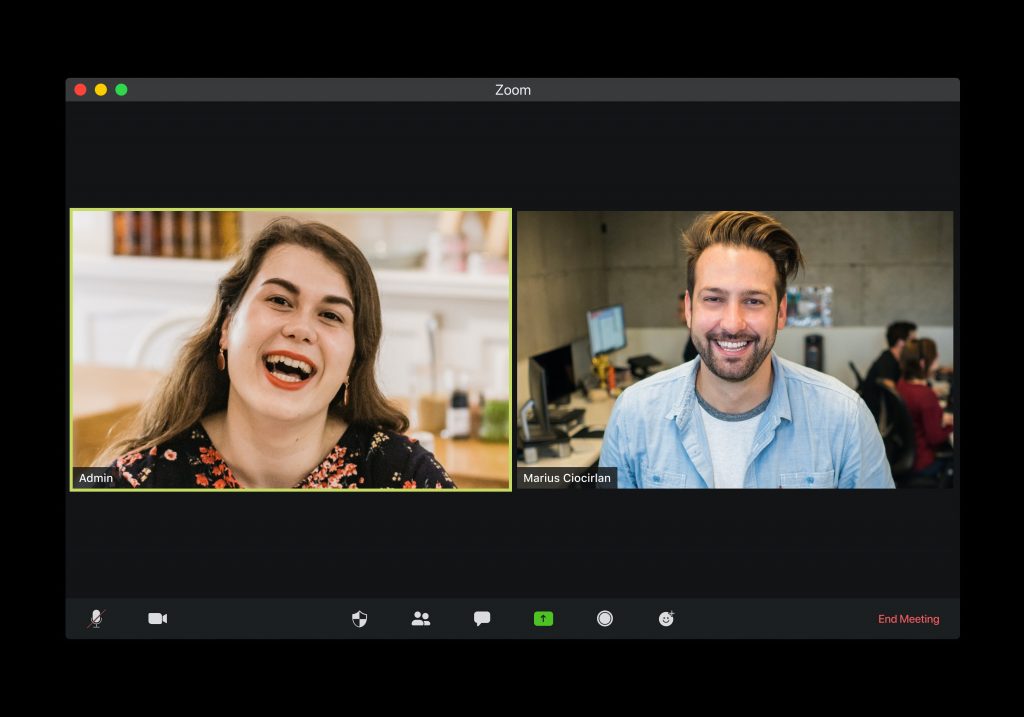The remote video interview is here to stay — learning how to master it will serve you now and in the days to come.
COVID-19 has more people working from home than ever before — including hiring managers. Even when the new normal begins to give way to the old, the way we work is likely to be forever changed. In-person interviews will return — in time. But going forward, the remote interview will be a BIG part of how hiring managers screen candidates. Most managers have participated in online meetings in the past, but not all know how to conduct a great video interview. The good news is that some best practices can help take your video interviewing skills to the next level.
Here are some tips on how to prepare — and make the most of — a remote interview.
1. COMMUNICATION IS KEY.
With an onsite interview, most candidates know what to expect, but a remote interview is a different ballgame. Your candidate may not know what to expect — and there’s a chance that they have never done a remote interview before. Set them at ease by clearly communicating and preparing them for what to expect; it will help make the entire interview process run more smoothly.
Establish who will place the call or what online video platform you will be using. Make sure you specify if the interview will be a phone or video interview — no one wants to log into the meeting and be surprised.
Send any software needed, along with simple instructions on how to download and set up the program. The five most popular online video platforms include Zoom, Skype, Google Hangouts, GoToMeeting, and Webex.
Provide the interviewee the names and titles of any colleagues who may be joining the interviews.
2. PREPARE YOUR QUESTIONS AHEAD OF TIME
While you may be tempted to play it by ear, having questions prepared ahead of time will help the interview go more smoothly. Print out your questions, so you have them at the ready for easy reference. It’s a smart idea to include some specific questions to help understand if the candidate will be a good remote employee. Certain traits are associated with successful remote workers—look for someone who is:
- Self-motivated
- Disciplined
- Tech-savvy
- Responsive
- A strong communicator
- Experienced in working remotely
3. CHECK THE TECH
While this advice is often given to candidates, it is equally as helpful for the interviewer. Remote interviews require technology — you want to make sure it’s working for you. Check the basics first; make sure that your:
- Computer camera and microphone are working.
- Login information is correct — particularly if you have not used the video conferencing app in a while.
- WiFi or internet connection is working well.
- Laptop or tablet is charged and ready to go.
Once you know that all those things are up to snuff, do a technical trial run of your videoconferencing platform with enough time to switch gears if something is not working. Most programs have a testing feature that will allow you to mimic a live call and make sure everything in on point. Test meeting links for the five most popular videoconferencing platforms below:
Zoom
Skype
Google Hangouts
GoToMeeting
WebEx
4. MAKE A BACKUP PLAN
Our best-laid plans often go awry. Despite all your preparation, you may have to punt to Plan B if the platform you plan to use does not work. Bandwidth is a common issue during this time — if more than one person is WFH, there can be delays or other hiccups with video conferencing apps. While not ideal, one way to handle this issue is to turn off the video function on the platform. You will still be able to talk to each other — just sans visuals. One way to mitigate the bandwidth challenge is to try scheduling the interview at a time when fewer people in your home are online.
Have the candidate’s email and phone number handy, so you can easily reach out. If tech tanks on either end, you may end up having an “old-fashioned” phone call instead of a video interview.
5. SET THE SCENE
When you’re conducting a video interview from your company office, setting the scene generally involves booking a conference room — but in this epoch of WFH, you’ll need to make sure that your WFH environment is a professional one. Look around at what the interviewee may see in the background. Aim to keep it simple, clean, neutral — and as businesslike as possible. If your desk is showing, organize the top and banish any clutter. Zoom backgrounds may be your friend if you can’t curate a corner of your actual space (and, of course, if you’re conducting your remote interview on Zoom). Here are eight great options!
6. MINIMIZE DISTRACTIONS
It’s a good idea to nix notifications, switch off email alerts, turn your cellphone to silent, and put your Slack and other chats to rest during the interview. If possible, avoid having video interviews in high-traffic areas of your home. Tape a note to your door (or the back of your laptop) so that you are not disturbed. And try to stay still — if you’re shifting or walking around, it can make it more difficult for the other person to focus. Your goal is to foster the most productive interview; by minimizing distractions, you’ll be well on your way.
7. DRESS THE PART
Dress as though you are going to work — even if you are working from home. In terms of what comes across well on camera, here are a few tried-and-true tips:
- White is a bad choice on camera—blue is a better option; neutral tones work well too.
- Busy patterns can be distracting.
- Keep jewelry to a minimum.
8. BE PREPARED
Make things simple for yourself. Print out your interviewee’s résumé and your list of questions. Have a clean pad of paper or notebook ready and put the interviewee’s name on it;you’ll have a convenient place to take notes and jot down questions that might come to you during the interview. You may also want to log in a few minutes early so that you’re not rushing — and so that you can make sure your technology is on point.
9. SMILE AND MAKE EYE CONTACT.
A video interview is not the same as an in-person interview for various reasons. One of the things that sets it apart is that it can be tricky to remember how to actually “make” eye contact. While you may be tempted to look at the candidate’s image or at yourself, please remember that you have to look at the camera to make eye contact. Here’s a fun reminder: draw a pair of eyes on a sticky note and place just underneath your webcam. You want to show that you are engaged in the conversation. Facial expressions add variety and inflection to your voice, making you sound more personable — and smiling uses muscles that warm the tone of your voice. Because there can be a slight lag with video conferencing technology, try to leave a few seconds at the end of your sentences or after a question to minimize speaking over one another.
10. CLOSE STRONG
After the interview, ask if there are any additional questions and let candidates know what will happen next in the process. Much like an in-person interview, thank candidates for their time and let them know that you are available via email should any questions arise.
As a key member of your organization, you are the guide for the search and interview process in these unprecedented and challenging times. The good news is that learning how to conduct a great remote interview will help your company stand out, and will provide candidates with the best view of your organization.
About the author.
An award-winning creator and digital health, wellness, and lifestyle content strategist — Karina writes, edits, and produces compelling content across multiple platforms — including articles, video, interactive tools, and documentary film. Her work has been featured on MSN Lifestyle, Apartment Therapy, Goop, Psycom, Pregnancy & Newborn, Eat This Not That, thirdAGE, and Remedy Health Media digital properties.





